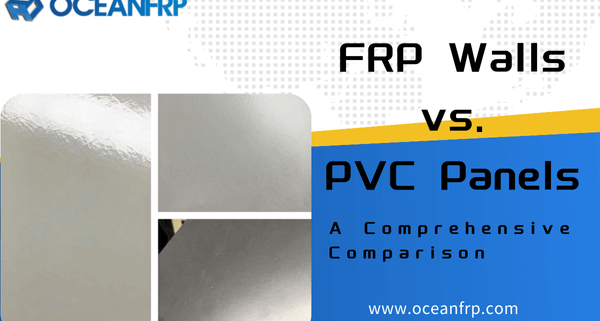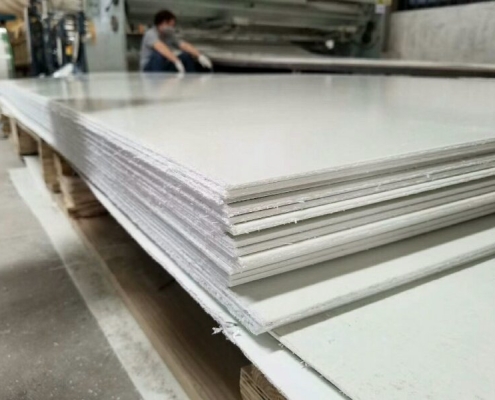FRP Walls vs. PVC Panels: A Comprehensive Comparison
In various industries, frp walls play a crucial role in enhancing aesthetics and providing insulation. FRP (Fiber Reinforced Plastic) and PVC (Polyvinyl Chloride) panels are two popular choices known for their unique characteristics. While FRP panels offer exceptional strength ideal for aerospace and automotive sectors, PVC panels excel in cost-effectiveness and durability for commercial projects. This comparison aims to dissect the features of each material to guide decision-making based on specific needs.
Cost Comparison
Material Costs
Initial Costs
When comparing FRP sheets and PVC panels, it is evident that FRP sheets may have a higher initial cost. However, this investment translates into long-term savings and reduced maintenance costs. On the other hand, PVC panels are known for their cost-effectiveness in the long run.
Long-term Costs
The disparity between FRP panels and PVC panels becomes more apparent when considering long-term expenses. While FRP panels may seem affordable initially, additional labor and material costs can significantly increase overall expenses. In contrast, PVC panels emerge as a superior option due to their ease of installation, moisture resistance, smooth surface, and minimal maintenance requirements.
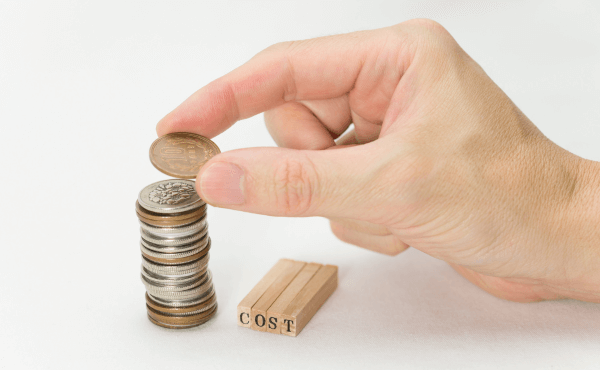
Labor Costs
Installation Costs
FRP sheets often incur higher labor costs during installation compared to PVC panels. The intricate nature of working with FRP materials can lead to increased installation time and expenses. Conversely, PVC panels stand out for their straightforward installation process, resulting in lower labor costs.
Maintenance Costs
When it comes to maintenance expenses, FRP panels may require more frequent upkeep and repairs than PVC panels. The durability of PVC makes it a cost-effective choice in terms of maintenance over the lifespan of the wall paneling. Additionally, the longevity of PVC contributes to reduced maintenance costs in the long term.
Overall Cost Efficiency
In evaluating the overall cost efficiency between FRP walls and PVC walls, it is clear that while FRP may offer lower initial costs, the cumulative expenses over time can outweigh its benefits. On the contrary, opting for PVC panels proves to be a financially prudent decision due to their affordability in both material and labor aspects. This makes them a more cost-efficient solution for various industries seeking durable and budget-friendly wall paneling options.
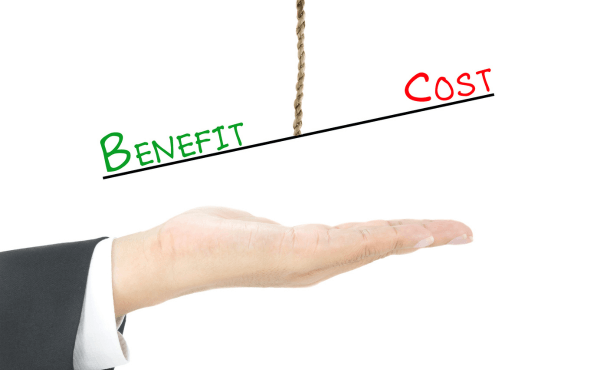
Durability and Maintenance
Durability Factors
Resistance to Moisture
PVC panels exhibit exceptional resistance to moisture, ensuring longevity and structural integrity in various environments. The non-porous nature of PVC prevents water infiltration, making it an ideal choice for spaces prone to high humidity levels.
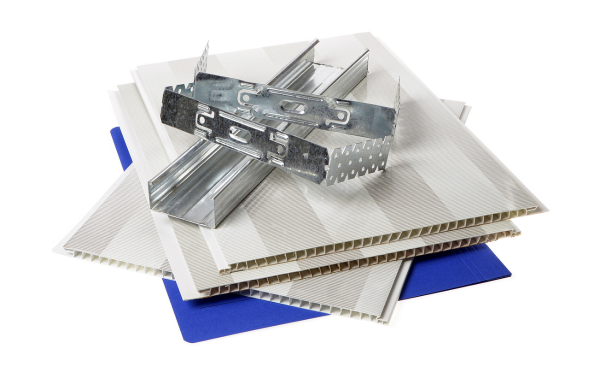
FRP walls, while durable, may face challenges with moisture resistance over time. The composition of FRP panels can make them susceptible to water damage, leading to potential maintenance issues and reduced lifespan in areas with elevated moisture levels.
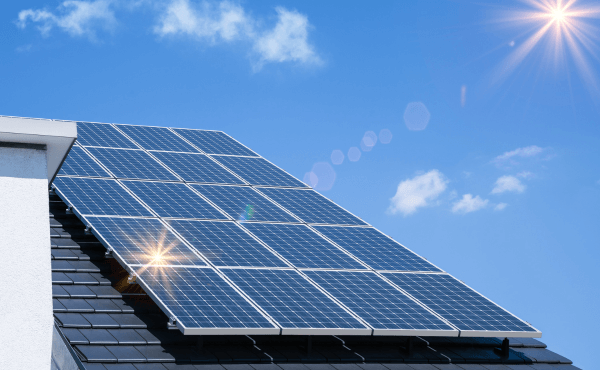
Impact Resistance
PVC panels are renowned for their impact resistance, offering robust protection against physical damage. This durability makes PVC a preferred option for high-traffic areas or locations where accidental impacts are common.
FRP walls, although sturdy, may not match the impact resistance of PVC panels. The inherent strength of FRP can withstand certain impacts; however, prolonged exposure to forceful contact may result in visible damage or structural weaknesses.
Maintenance Requirements
Cleaning Ease
PVC panels stand out for their effortless cleaning process. With a smooth surface that repels dirt and grime, PVC requires minimal maintenance to maintain its pristine appearance. Regular cleaning with mild detergents is usually sufficient to keep PVC walls looking fresh.
FRP walls, on the other hand, may demand more rigorous cleaning efforts due to their textured surface that can trap dust and stains. Specialized cleaning agents or techniques might be necessary to ensure thorough cleanliness without damaging the FRP material.
Repair and Replacement
When it comes to repair and replacement needs, PVC panels offer a convenient solution. In case of damage or wear, individual PVC panels can be easily replaced without extensive labor or costs involved. This flexibility contributes to the long-term cost efficiency of PVC wall installations.
FRP walls, while resilient, may require professional intervention for repairs or replacements. The intricate nature of FRP paneling could lead to complex repair processes and higher expenses when addressing damages or deteriorating sections over time.
Longevity
Lifespan of FRP Walls
The longevity of FRP walls varies depending on environmental factors and maintenance practices. With proper care and upkeep, FRP panels can provide durable performance for an extended period. However, neglecting maintenance routines may shorten the lifespan of FRP installations.
Lifespan of PVC Walls
In contrast, PVC walls boast an impressive lifespan due to their resistant properties and low-maintenance requirements. Properly installed PVC panels can retain their quality and functionality over years without significant degradation, making them a reliable choice for long-lasting wall solutions.
Installation Process
Ease of Installation
Tools and Materials Needed
For FRP walls, the installation process demands plywood or a backer, along with surface fasteners like adhesives, lamination, or taping. This intricate setup contributes to the complexity and time-consuming nature of FRP panel installations.
In contrast, PVC wall panels offer a streamlined installation experience. Designed with tongue and groove interlocking technology, PVC panels easily attach to studs without the need for additional backers. The simplicity of PVC panel installations reduces the requirement for skilled labor and specialized tools.
Time Required
Installing FRP panels typically extends over multiple days due to the detailed procedures involved. From preparing the surface to securing the panels in place, each step requires meticulous attention and effort, resulting in a prolonged installation timeline.
Conversely, PVC wall panels significantly reduce installation time. With the ability to swiftly interlock using common tools, such as screws, PVC panels expedite the installation process. Hiring a single qualified contractor can efficiently complete PVC panel installations within hours.
Installation Techniques
FRP Walls Installation
The installation of FRP walls poses challenges due to their cumbersome nature. Cutting FRP panels can be arduous, requiring precision and expertise to achieve accurate dimensions. Additionally, the multi-step process involving backer application and adhesive use complicates the installation procedure.
PVC Walls Installation
Installing PVC walls presents a contrasting experience characterized by simplicity and efficiency. Unlike FRP panels, PVC panels do not necessitate backers or messy glues during installation. The pre-finished nature of PVC panels streamlines the process, requiring only basic tools and minimal labor for successful completion.
Common Challenges
FRP Walls Challenges
FRP wall installations are known for their complexity and demanding requirements. Handling FRP materials can be challenging due to their rigid composition and intricate cutting procedures. Moreover, the need for skilled installers proficient in backer application adds another layer of difficulty to working with FRP walls.
PVC Walls Challenges
While PVC wall installations offer ease of use compared to FRP counterparts, challenges may still arise during the process. Ensuring precise alignment and interlocking of PVC panels is crucial for a seamless finish. Despite being simpler overall, minor errors in alignment can impact the aesthetic appeal and functionality of PVC wall installations.
Environmental Impact
Material Composition
FRP Walls Materials
FRP walls are primarily composed of fiberglass strands embedded in a resin matrix.
The fiberglass provides strength and rigidity to the panels, ensuring durability and impact resistance.
A protective gel coat is applied to the surface of FRP walls, enhancing their resistance to chemicals and environmental factors.
PVC Walls Materials
PVC walls consist of polyvinyl chloride, a synthetic plastic polymer known for its versatility and durability.
The PVC material is lightweight yet robust, making it ideal for various applications requiring long-lasting performance.
Additives such as stabilizers and plasticizers are incorporated into PVC panels to enhance their structural integrity and resistance to degradation.
Recyclability
FRP Walls Disposal
When considering the disposal of FRP walls, recycling options are limited due to the complex composition of fiberglass and resin.
Proper disposal methods involve separating the materials for specialized recycling facilities that can handle fiberglass components.
While challenging, efforts are being made to explore innovative recycling techniques for sustainable management of FRP waste.
PVC Walls Disposal
Disposing of PVC walls offers more environmentally friendly solutions compared to FRP panels.
PVC’s recyclability allows for efficient processing into new products or materials, reducing overall waste generation.
Recycling initiatives focused on PVC contribute to a circular economy approach, promoting resource conservation and sustainability practices.
Environmental Benefits
Sustainability of FRP Walls
Despite challenges in recycling, FRP walls offer environmental benefits through their energy-efficient manufacturing process.
The durability and longevity of FRP panels reduce the need for frequent replacements, minimizing material consumption over time.
Innovations in eco-friendly production methods aim to enhance the sustainability profile of FRP wall systems.
Sustainability of PVC Walls
Sustainability is inherent in PVC walls due to their recyclable nature and low environmental impact during manufacturing.
The long lifespan of PVC panels aligns with sustainable practices by reducing resource depletion through extended product use.
Ongoing advancements in PVC technology focus on enhancing sustainability features, making them a preferred choice for eco-conscious projects.
Specific Use Cases
Industry Applications
Aerospace and Automotive
Industry professionals validate data through primary interviews to gather qualitative and quantitative insights. The report’s detailed research methodology includes extensive secondary research and validation with internal databases.
Industry stakeholders and experts contribute their qualitative and quantitative insights, ensuring the accuracy of the findings. The rigorous primary interviews conducted by industry professionals provide valuable industry data for analysis.
With insights from over 250 Analysts and SMEs, data collection is governed by industrial techniques that focus on high-impact and niche markets. These experts analyze trends, projections, and market behavior to offer comprehensive industry perspectives.
Performance in Different Environments
High Moisture Areas
FRP walls demonstrate resilience in high-moisture environments, providing durable protection against water damage. The fiberglass composition enhances the moisture resistance of FRP panels, making them suitable for areas prone to humidity.
In contrast, PVC walls excel in maintaining structural integrity in high-moisture conditions due to their non-porous nature. PVC’s resistance to water infiltration ensures long-lasting performance without compromising quality or appearance.
High Impact Areas
When exposed to high impact, FRP walls exhibit robustness against physical force, minimizing visible damage or structural weaknesses. The strength derived from fiberglass reinforcement enables FRP panels to withstand impacts effectively.
Similarly, PVC walls offer exceptional impact resistance, safeguarding surfaces from potential damage in high-traffic locations. The durability of PVC panels ensures longevity and protection against accidental impacts, maintaining the integrity of wall installations over time.
FRP panels are a cost-effective choice in the long run, offering significant long-term savings due to their durability and low maintenance requirements.
PVC panels have a longer lifespan and require less maintenance than FRP panels, making them a more cost-effective choice in the long run.
PVC Panels are a sustainable choice with reduced environmental impact, boasting an outstanding lifespan of 100 years compared to FRP wall panels.

